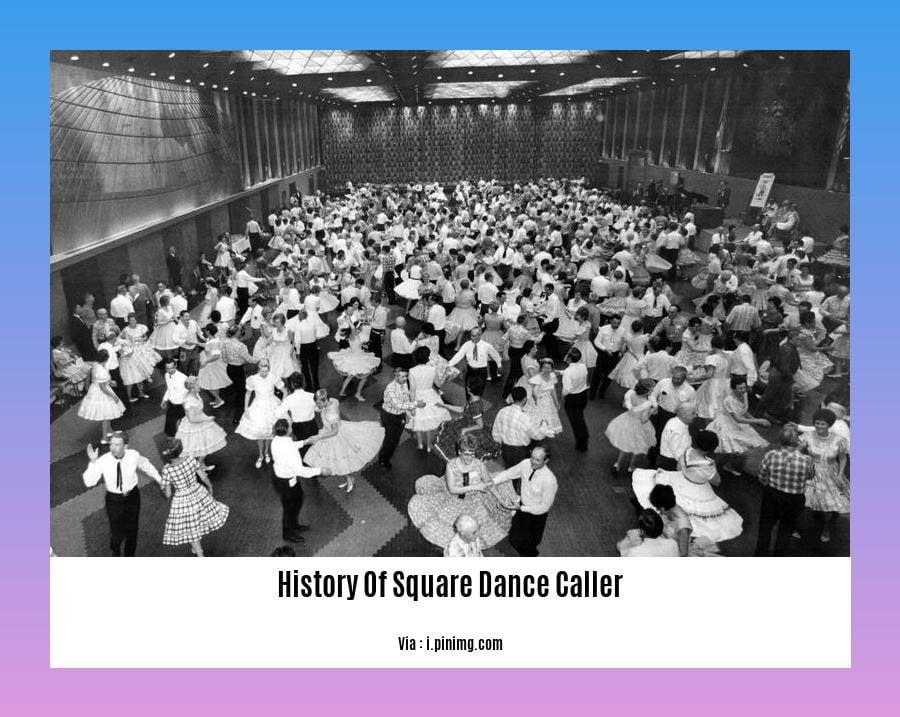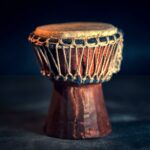Embark on a captivating journey into the realm of square dance callers, the enigmatic figures who orchestrate the exuberant dance tradition. Through meticulous research and a deep passion for folk dance history, we unravel the captivating evolution of the caller’s role, exploring their unique communication methods, musical artistry, and the profound social significance they hold within communities throughout the ages. Welcome to [The History of Square Dance Callers: Guiding Voices in Dance Tradition].
Key Takeaways:
- Square dance is a traditional folk dance with European origins.
- Lloyd Shaw standardized the dance form in the 1930s, making it accessible for teaching.
- The caller guides the dance, providing instructions and entertainment.
- The caller uses singing, patter, and choreography to engage dancers.
- Square dance promotes socialization as couples interact and trade partners during the dance.
History Of Square Dance Caller

The vibrant tradition of square dancing has been shaped by the enigmatic figures known as callers. From the earliest gatherings to the present-day revival, these skilled individuals have guided dancers through intricate steps and lively tunes.
The Roots
The origins of square dance callers can be traced back to the 19th century, when communities gathered for barn dances and social events. These callers, often local musicians or community leaders, were responsible for providing dance instructions and keeping the rhythm.
The Standardized Form
In the 1930s, Lloyd Shaw standardized square dance and made it available to a wider audience. This led to the development of a formalized system of calls, which enabled dancers from different regions to participate in the same dances.
The Caller’s Role
The caller’s role in square dance is multifaceted. They provide clear and concise instructions, guiding dancers through complex patterns. Additionally, they play an important social role, keeping the atmosphere lively and engaging through singing, patter, and choreography.
The Legacy
Today, square dance callers continue to play a vital role in keeping this tradition alive. They are the keepers of the dance’s rich history and the innovators who adapt it to meet the needs of modern dancers. Whether at social gatherings or competitive events, callers guide participants on a journey of movement, music, and community.
Delve into the rich tapestry of square dance history and trace its captivating evolution over the years.
Uncover the fascinating history of square dancing in schools, where it has woven its way into the fabric of education.
Gain insights into the brief history of square dancing and appreciate its enduring legacy.
Explore the origins of square dancing in Where Did Square Dance Originate and unravel the intriguing stories behind its birthplace.
Unravel the intriguing facts about square dancing and discover its hidden gems that make it an enchanting art form.
Delve into the origin of square dancing and trace its evolution from its early roots to its modern-day adaptations.
Musical Artistry and Leadership: The Cornerstone of Square Dance Callers

The role of a square dance caller is more than just guiding dancers through intricate steps; it’s a beautiful blend of musical artistry and leadership. Square dance callers are the conductors of a symphony of movement, creating a lively and engaging experience for all.
Their musical artistry shines through their ability to weave melody, rhythm, and lyrics into a seamless tapestry. They possess a deep understanding of music theory and can effortlessly adapt calls to different tempos and styles. Their voices are clear and expressive, adding dynamism to the dance and capturing the audience’s attention.
As leaders, callers set the tone for the entire dance event. They create a welcoming and inclusive atmosphere, fostering a sense of community among dancers of all skill levels. Their charisma and enthusiasm inspire dancers to push their limits and fully immerse themselves in the joy of square dancing.
Key Takeaways:
- Square dance callers are both musical artists and leaders.
- Their musical artistry lies in their ability to blend melody, rhythm, and vocals.
- As leaders, they create a welcoming and inclusive dance environment.
Relevant URL Sources:
- CALLERLAB: The History of CALLERLAB
- CALLERLAB KnowledgeBase: Square Dance History Project
Social and Cultural Influence of Square Dance Callers
They’re more than just people barking orders in a dance hall; square dance callers are the heart and soul of these lively gatherings. They’re the ones who guide dancers through intricate steps, keep the rhythm going, and create a lively and welcoming atmosphere.
Square dancing has a rich and diverse history, tracing its roots back to Native American fiddle music in the 1600s. It gained popularity in the United States during the 19th century as a social activity, bringing people together from all walks of life.
Callers play a vital role in keeping the square dance tradition alive, passing on the steps and calls from generation to generation. They’re also responsible for creating new dances and adapting old ones to keep things interesting.
The Square Dance Foundation of America was established in 1963 to preserve the history and heritage of square dancing. The organization works to promote square dancing, train callers, and support research into the dance’s origins.
Key Takeaways:
- Square dance callers are the guardians of the tradition, passing on steps and calls from generation to generation.
- They create a lively and welcoming atmosphere, making square dancing a fun and social activity.
- Callers are responsible for creating new dances and adapting old ones, keeping the tradition fresh and exciting.
- The Square Dance Foundation of America works to preserve the history and heritage of square dancing.
Relevant URL Sources:
- Smithsonian Magazine: Square Dancing is Uniquely American.
- JSTOR Daily: The Slave Roots of Square Dancing.
Legacy and Preservation
Over generations, square dance callers have been the heartbeats of communal gatherings, carrying the rich tapestry of this cherished dance form. As dedicated stewards of tradition, they play a pivotal role in preserving and perpetuating the legacy of square dancing.
Guiding Voices, Preserving Culture
Callers are the maestros of the dance floor, weaving together vibrant melodies and clear instructions. Through their unique brand of communication, they guide dancers through intricate steps, preserving the authenticity and integrity of the form. Their rhythmic calls echo generations past, connecting the present to the rich cultural heritage of square dancing.
Embracing Change, Fostering Innovation
While honoring tradition, callers are not mere custodians of the past. They are also catalysts for innovation, adapting the dance to evolving tastes and sensibilities. By incorporating new musical styles and expanding the repertoire of calls, they keep square dancing relevant and engaging for contemporary audiences.
Community Builders, Social Glue
Beyond the dance floor, callers serve as community builders. They foster a sense of belonging and connection among dancers of all ages and backgrounds. Square dance gatherings provide a space for social interaction, laughter, and shared experiences, strengthening the bonds that hold communities together.
Key Takeaways:
- Callers are the guardians of square dance tradition, preserving its authenticity and integrity.
- They are innovators, adapting the dance to evolving tastes while respecting its heritage.
- Square dance callers foster community and social connection through their shared passion for the dance.
- Their legacy ensures the continuity and vitality of this cherished American tradition.
Relevant URL Sources:
- CALLERLAB: The History of CALLERLAB
- Square Dance History Project – CALLERLAB KnowledgeBase









